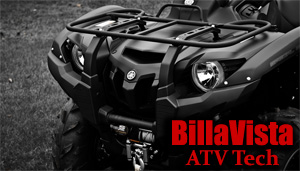This is how the interlock mechanism works.
When you move the shifter (A), the shift rod moves back and forth (B), causing the shift guide to rotate (C).
There is a spring-loaded pin (D) that prevents the rotation of the shift guide (and therefore the shift) by intefering with the slotted tab on the end of the shift guide (E).
Applying the rear brake, by foot pedal or hand lever, causes a "shift control cable " to retract the pin, allowing the shift to be made. |
